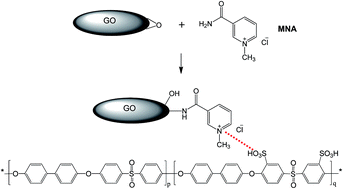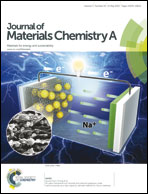Simultaneously covalent and ionic bridging towards antifouling of GO-imbedded nanocomposite hollow fiber membranes†
Abstract
A group of GO-imbedded nanocomposite hollow fiber membranes was investigated for oily water treatment, with the objectives of improving GO-polymer interfacial interaction and membrane anti-fouling properties via the formation of a simultaneously covalent and ionic inter-network. 1-Methylnicotinamide chloride (MNA) was selected to bridge the two parties. The reaction scheme was proposed and evidenced by FTIR and XRD analyses. The resultant membranes were systematically studied with respect to membrane microstructure, ultrafiltration performance and fouling behaviors. The responses of the membranes to oil–water fouling were evaluated by the resistance-in-series model and cyclic UF experiments with periodic backwashing. It appears that the membrane with a GO : MNA ratio of 9 : 1 was found to exhibit the most favorable properties for oil–water separation. Substantial reductions in reversible, irreversible and adsorption-induced resistances as well as flux drop were observed. Generally, the superior anti-fouling properties of the nanocomposite membrane benefit from the contributions of (1) the hydrophilic nature of GO and MNA, (2) appropriate GO : MNA ratio and (3) synergetic effects between GO and MNA to overcome the interfacial voids and produce a balanced membrane structure. In addition to unveiling the importance of interfacial interaction between GO nanofillers and polymer matrices, this work may pave the way to design advanced GO-imbedded anti-fouling nanocomposite membranes for the years to come.


 Please wait while we load your content...
Please wait while we load your content...